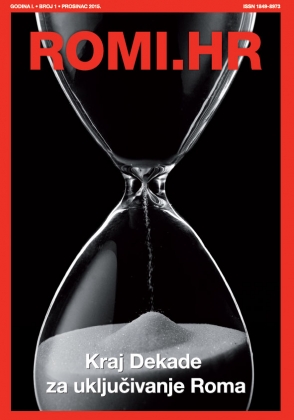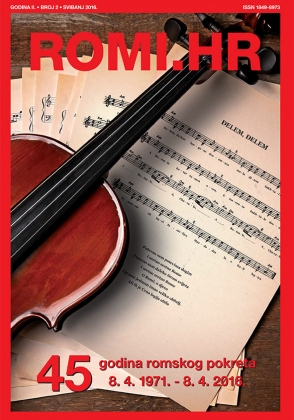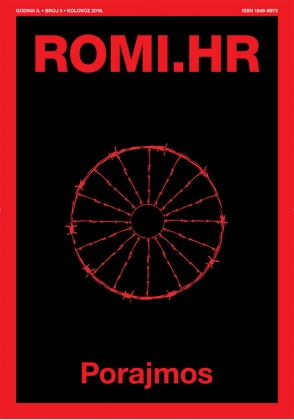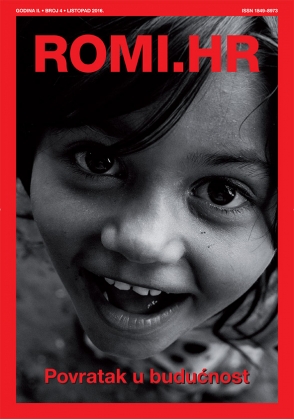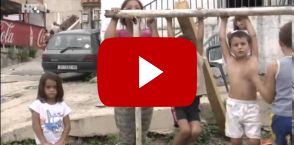Zanimljivosti ROMI.HR
/Ako netko želi osjetiti ruski duh, najbolji način za to je posjetiti Rusiju u zimskom razdoblju. Ovo godišnje doba ima posebnu čaroliju uvelike zahvaljujući atmosferi novogodišnjih i božićnih praznika koji su omiljeni praznici većine Rusa. To su rijetki praznici kada se slavljenička atmosfera osjeća dugo prije njihovog početka, pa čak i neko vrijeme nakon završetka praznika. Iako se u današnje vrijeme može činiti da su Nova godina i Božić uvijek bili sastavni dio ruske tradicije, u stvari ova dva praznika imaju mnogo složeniju povijest.
Prijevod: Daria Maracheva
Tradiciju proslave Nove godine 1. siječnja uveo je prvi ruski car Petar Veliki 1699. godine. Međutim, sve do Oktobarske revolucije 1917. godine, upravo Božić se smatrao jednim od najvažnijih blagdana u Ruskom Carstvu. U Sovjetskom Savezu proslava Božića je bila zabranjena i s vremenom Nova godina je postala glavni praznik. Iako se nakon pada Sovjetskog Saveza Božić ponovo počeo slaviti i danas je to blagdan koji slave mnogi Rusi, Božić nikad nije postao tako istinski nacionalni blagdan kao što je bio prije dolaska komunista na vlast. Dakle, u modernoj Rusiji Nova godina je vjerojatno najpopularniji i najčešće slavljeni praznik. U Rusiji su ne samo Nova godina i Božić, koji se slavi 7. siječnja, državni praznici, već i svi dani koji su između njih, kao i drugi dan Božića kada se slavi Sabor Presvete Bogorodice (8. siječanj). Tako su Nova godina i Božić najduži praznici u godini i jedni od najomiljenijih među Rusima.
Nova godina za Ruse je vrlo simboličan praznik. Ljudi se opraštaju s starom godinom, daju obećanja da će promijeniti svoj život i iskreno vjeruju da će Nova godina biti drugačija i naravno bolja od prethodne. U Rusiji se vjeruje da će se nastupajuća godina proživjeti na isti način na koji se dočekuje, zato Nova godina nije praznik koji se može zanemariti. Rusi se vrlo temeljito pripremaju za Novu godinu. Kupuju poklone za svoju obitelj, prijatelje i kolege, razmišljaju o jelima koja će se poslužiti na novogodišnjem stolu i kako će biti odjeveni, ukrašavaju kuće svjetiljkama i pahuljicama od papira. Novogodišnje drvce ukrašeno kuglicama i lampicama je također obvezni element dočeka Nove godine.
Ne samo kuće već i glavni trgovi ruskih gradova i mjesta su lijepo ukrašeni za Novu godinu. U ovo godišnje doba posebno Crveni trg izgleda kao bajkovito mjesto. Osvijetljen je stotinama lampica, po cijelom trgu se čuju najbolje novogodišnje pjesme, novogodišnji sajam čeka da vas ugrije vrućim ruskim čajem s limunom ili sbitenom (napitak od meda, začina i biljaka). Ako ste došli s djecom, oni se u međuvremenu mogu voziti na vrtuljku. U sred Crvenog trga se nalazi i klizalište, i ako nikada prije niste klizali, to je sjajna prilika isprobati ovu zabavu u samom srcu ruske prijestolnice. I naravno, ključni element koji doprinosi savršenom novogodišnjem raspoloženju je snijeg!

Dok smo pričali u međuvremenu se približila novogodišnja večer. Hajde da vidimo kako izgleda doček Nove godine u Rusiji. Rusi obično slave Novu godinu s obitelji ili prijateljima. Bliski ljudi se okupljaju navečer 31. prosinca, gledaju popularne novogodišnje filmove ili koncerte na televiziji i jedu tradicionalna ruska novogodišnja jela. Na ruskom novogodišnjem stolu mora biti ruska salata, “seljodka pod šubom“ (haringa pod bundom), mesna hladetina i naravno kavijar. Najtradicionalnije novogodišnje voće je mandarina.
Nešto prije ponoći, Rusi gledaju predsjednikovo novogodišnje obraćanje na televiziji, zaželjevši nešto dok sat na Spaskoj kuli Moskovskog Kremlja otkucava ponoć, a nakon toga piju šampanjac i čestitaju jedni drugima sretnu Novu godinu. U prvim minutama Nove godine ljudi obično izlaze van gledati vatromet koji se ispaljuje na glavnim trgovima svakog ruskog grada i gotovo u svakom dvorištu.
Zatim dolazi vrijeme za novogodišnje poklone. Ali djeca će dobiti svoj poklon tek ujutro kad se probude i pogledaju ispod novogodišnje jelke. Malo prije Nove godine djeca pišu pismo Djedu Morozu (Djedu Mrazu), u kojem opisuju svoje uspjehe te dobro ponašanje i traže poklone. Mišljenja u Rusiji o tome kako se nastao Djeda Mraz se razlikuju. Prema nekim verzijama, on je nasljednik pretkršćanskog duha hladnoće i zime. Drugi istraživači tvrde da je lik vrlo sličan modernom Djedu Mrazu, a pojavljuje se u bajci koju je 1840. godine napisao ruski književnik Vladimir Odoevskij, koji se pak služio ruskom narodnom pričom "Morozko". Treći smatraju da je Djeda Mraz ruska verzija Santa Clausa koji se prikazivan na Božićnim čestitkama koje su dolazile u Rusko carstvo iz Europe krajem 19. početkom 20. stoljeća i bile su vrlo popularne u to vrijeme. Veliki Ustjug, grad u Vologdskoj regiji, je 1999. godine postao službena rezidencija Djeda Mraza u kojoj on trenutno živi s svojom unukom Snjeguroćkom.

Što se tiče Božića, pored Uskrsa to je drugi najvažniji blagdan za sve kršćane. U Rusiji se Božić slavi 7. siječnja. Razlog tomu je činjenica da pravoslavna crkva još uvijek živi po julijanskom kalendaru, koji se sada razlikuje od gregorijanskog kalendara za 13 dana.
Za razliku od Nove godine, Božić je dominantno obiteljski blagdan. Njemu prethodi 40-dnevno razdoblje posta. Uzimajući u obzir popularnost Nove godine u Rusiji i obilje jela na novogodišnjem stolu, to uopće nije lako izvesti. U Rusiji se Badnjak zove Soćelnjik. Ovaj dan je dobio ime po soćivu (leći), odnosno pšeničnoj kaši pomiješanoj s medom, orasima, suhim grožđem i drugim suhim voćem, koje je obavezno jelo na božićnom stolu. Na Badnjak večera počinje kasno navečer nakon toga što se na nebu pojavi prva zvijezda. Ona simbolizira Betlehemsku zvijezdu koja je obilježila rođenje Isusa. Badnjak je zadnji dan posta te na stolu moraju biti samo posna jela. Prema tradiciji na stolu bi trebala biti 12 jela, koja simboliziraju 12 apostola.
U noći s 6. na 7. siječanj je također vrlo važno sudjelovati na ponoćnoj službi koja se održava u svim pravoslavnim crkvama u Rusiji. Središnja liturgija se služi u Moskvi u Sabornom hramu, odnosno u katedrali Krista Spasitelja. Ona okuplja do pet tisuća vjernika i prijenos se emitira na nacionalnim TV kanalima i radiju.
Nakon polnoćke dugačkom razdoblju posta dolazi kraj i konačno je vrijeme za božićni ručak. Na božićnom stolu se mogu naći pečena guska, jela od mesa i ribe, različite vrste salata, peciva i medenjaci - drugim riječima sve ono što je pravoslavcima nedostajalo tokom 40-dnevnog posta. Na sredinu stola se obično stavlja mala hrpa sijena koja simbolizira Isusove jasle. Na Božić je uobičajeno čestitati članovima obitelji i rođacima blagdan.
Dvanaest dana nakon Božića se zovu Svetim danima. To je vrijeme za slavlje i zabavu. Jedan od najpopularnijih oblika slavlja je koledavanje. Mladi dječaci i djevojčice odjeveni u različite kostime obilaze obližnje kuće. Čim domaćin otvara vrata, koledari počinju pjevati pjesme koje se zovu kolede. Zauzvrat koledari dobivaju slatkiši ili sitni novac.
Gatanje je također vrlo uobičajeno u ovom razdoblju, iako pravoslavna crkva nikad nije odobravala ovu tradiciju. Gatanje je posebno popularno među neudatim djevojkama koje na takav način pokušavaju saznati kada će se udati i i tko će im biti suprug.

Sveti dani se završavaju Bogojavljenjem koje u pravoslavlju naglasak stavlja na Isusovo krštenje. Ovog dana se održava obred blagoslova vode poznat i kao "Veliko posvećenje vode". U Rusiji je također uobičajeno praviti rupe u ledu jezera i rijeka, često u obliku križa, i zaranja se tri puta pod vodu. Vjeruje se da ovog dana voda ima ljekovitu i čudotvornu snagu.
Unatoč tome što su Nova godina i Božić zimski praznici, oni pružaju ljudima osjećaj nevjerojatne topline. Ova dva prekrasna praznika nam daju priliku da se odmorimo i provedemo vrijeme s ljudima koje volimo. Istovremeno, ako želite iskoristiti novogodišnje i božićno razdoblje za putovanje, a da pritom ne izgubite blagdansko ozračje, Rusija je savršena zemlja za to.
Čestit Božić i sretna Nova godina! Светлого Рождества и счастливого Нового года!
If one wants to feel the Russian spirit the best way to do it is to visit Russia in the winter period. This time of the year has special magic largely due to the atmosphere of the New Year and Christmas holidays that are beloved holidays for the majority of Russians. These are rare holidays when the festive atmosphere is felt long before their beginning and even sometime after the holidays end. Nowadays it may seem that both New Year and Christmas have always been an integral part of Russian tradition, however these two holidays have a more complicated history.
The tradition to celebrate New Year on January,1 was introduced by the first Russian Emperor Peter the Great in 1699. Nevertheless, before the October Revolution of 1917, it was Christmas which was considered to be one of the most important holidays in the Russian Empire. In the Soviet Union, the celebration of Christmas was forbidden and over time New Year became the main holiday. After the fall of the Soviet Union, a celebration of Christmas has been resumed and nowadays it is celebrated by many Russians, however it has never become as nationwide holidays as it was before communists came to power. Thus, in modern Russia it is the New Year which is probably the most popular and widely celebrated holidays. In Russia not only New Year and Christmas, which is celebrated on January 7, are state holidays but also all the days that are between them as well as January, 8. Thus, New Year and Christmas holidays are the longest holidays of the year and one of the most favorite among the Russians.
New Year for the Russians is a very symbolic holiday. People bid farewell to the old year, make promises to change their life and sincerely believe that the new year will be different and of course better than the previous one. In Russia, it is believed that one will live through the New year the same way he welcomes it, that’s why New Year is not a holiday that can be neglected. Russian people prepare for a New Year very thoroughly. They buy presents for their family, friends and colleagues, think of the dishes that will be served on the New Year table and how they will be dressed and decorate houses with garlands and paper-made snowflakes. The New Year tree decorated with baubles and lights is also a mandatory element of the New Year.
Not only houses but also main squares of Russian cities and towns are beautifully decorated for the New Year. In this time of the year the Red Square especially looks like a place from a fairy tale. It is illuminated with hundreds of lights, the best New Year songs are heard all over the square, New Year market is waiting to warm you up with hot Russian tea with lemon or sbiten (a drink made of honey, spices and herbs). If you’ve came with children, they can meanwhile ride the merry-go-round. There is also a skating rink in the middle of the Red Square so if you’ve never skated before it’s a perfect opportunity to try it the very heart of the Russian capital. And of course, the key element that contributes to a perfect New Year mood is snow!

We got distracted and meanwhile the New Year's eve approached. Now let’s see how New Year’s Eve looks like in Russia. The Russians usually celebrate New Year with family or friends. Close people gather together on the evening of December 31, watch beloved New Year movies or concerts on television and eat traditional Russian New Year dishes. A must-have on the Russian New Year table is the Russian salad, dressed herring, jellied meat and of course caviar. The most traditional New Year fruit is mandarin.
Shortly before midnight, the Russians watch the President's New Year address on television, make a wish while the clock on Spasskaya Tower of the Moscow Kremlin strikes 12 and after that drink champagne and wish each other happy New Year. In the first minutes of New Year people usually go out to watch fireworks, that are launched on the main squares of every Russian city and almost in every yard.
Then comes the time for New Year's presents. But children will receive their gift only in the morning when they wake up and look under the New Year tree. Before the New Year they write a letter to Djed Moroz (Farther Frost), telling him about their achievements and good behavior and asking for the presents they want. Opinions about the origin of Father Frost differ. According to some versions, he is the prototype of a pre-Christian spirit of coldness and winter. Other researchers claim that a very similar to modern Father Frost character is described in the fairytale that was written in 1840 by the Russian writer Vladimir Odoevsky who in turn used Russian folktale “Morozko”. According to another version Farther Frost is an adopted version of Santa Claus who was depicted on Christmas cards which were imported to the Russian Empire from Europe in the end of the 19 and the beginning of the 20 century and were very popular at that time. In 1999 Veliky Ustyug, a town in Vologda region, became an official residence of Father Frost where he currently lives with his granddaughter Snegurochka.
When it comes to Christmas, it is the second most important holiday after Easter for all Christians. In Russia Christmas is celebrated on January 7. This happened due to the fact that the Orthodox Church still lives according to the Julian calendar, which differs now from the Gregorian calendar by 13 days.
Unlike New Year, Christmas is exclusively a family holiday. It is preceded by the 40-day fasting period. Taking into account the popularity of New Year in Russia and the abundance of dishes on the New Year table it is always not an easy thing to do. In Russia Christmas Eve is called Sochelnik. It is named after sochivo - wheat porridge mixed with honey, nuts, raisins and dried fruits which is a must-have dish on the Christmas Eve table. In Sochelnik dinner starts late in the evening after the first star appears in the sky. It symbolizes the Star of Bethlehem which marked the birth of Jesus Christ. Sochelnik is the last day of fasting so only lenten dishes must be on the table. Ideally there should be 12 dishes, which symbolize 12 apostles.
On the night of 6 to 7 January, it is important to attend a Christmas midnight service which takes place in all Orthodox churches in Russia. The main service takes place in Moscow in the Cathedral of Christ the Savior. It gathers up to five thousand believers and is broadcasted on the national TV channels and radio.

After a Christmas service a long fasting period is eventually over and it’s time for a Christmas lunch. One can find baked goose, meat and fish dishes, different kinds of salads, pastries and gingerbread on the Christmas table – in other words everything that Orthodox Christians missed during the 40-day fasting period. A bunch of hay is usually put in the middle of the table which symbolizes Jesus' manger. On Christmas it’s common to congratulate family members and relatives on the holiday.
The twelve days following Christmas are called Holy days. It’s time for celebration and fun. One of the most popular form of celebration is caroling. Young boys and girls dressed up in different costumes visit nearby houses. When a host opens the door, carolers start to sing a song which is called carol. In return carolers are given sweets or some money.
It’s also common to do fortune-telling in this period though the Orthodox Church has always opposed this tradition. Fortune telling has been especially popular among unmarried girls who try to find out when they will get married and who will be their husband.
The Holy days end with Epiphany, which in Orthodoxy puts emphasis on the baptism of Jesus Christ. This is the day when the great Blessing of Waters also known as “the Great Sanctification of the Water” is conducted. In Russia, it is also common for Orthodox Christians to cut holes in the ice of lakes and rivers, often in the shape of the cross, and dip themselves three times under the water. It is believed that this day water has healing and miraculous power.
Despite the fact that New Year and Christmas are winter holidays they give people a feeling of incredible warmth. These two wonderful holidays give us the opportunity to take some rest and spend time with people we love. At the same time if you want to use the New Year and Christmas period for traveling without losing the holiday atmosphere Russia is the perfect country to do so.
Merry Christmas and a Happy New Year! Светлого Рождества и счастливого Нового года!
Galerija slika:
 Povratak na zanimljivosti
Povratak na zanimljivosti






